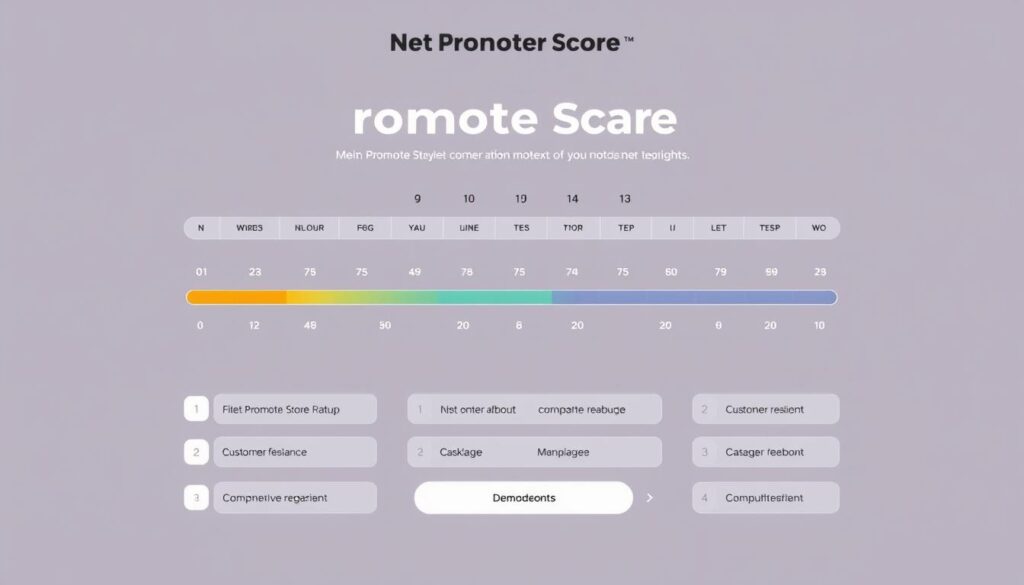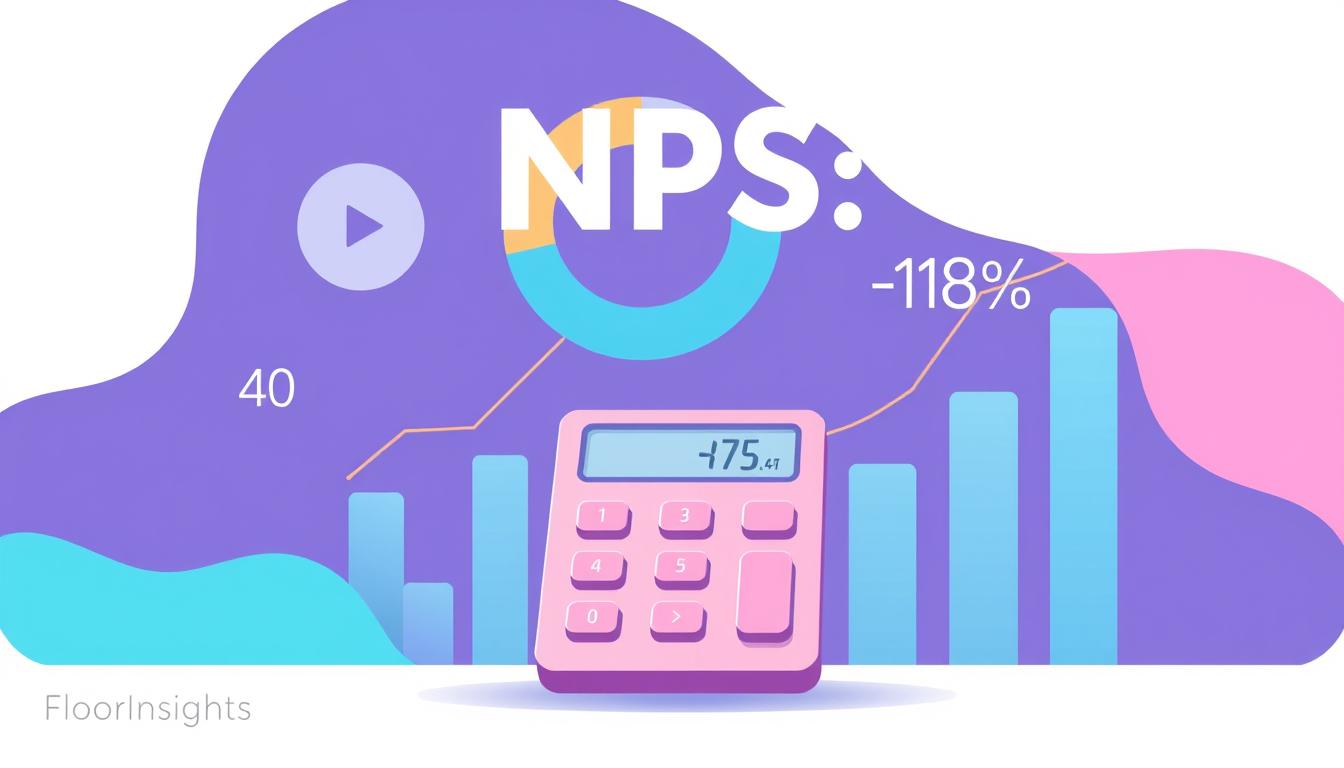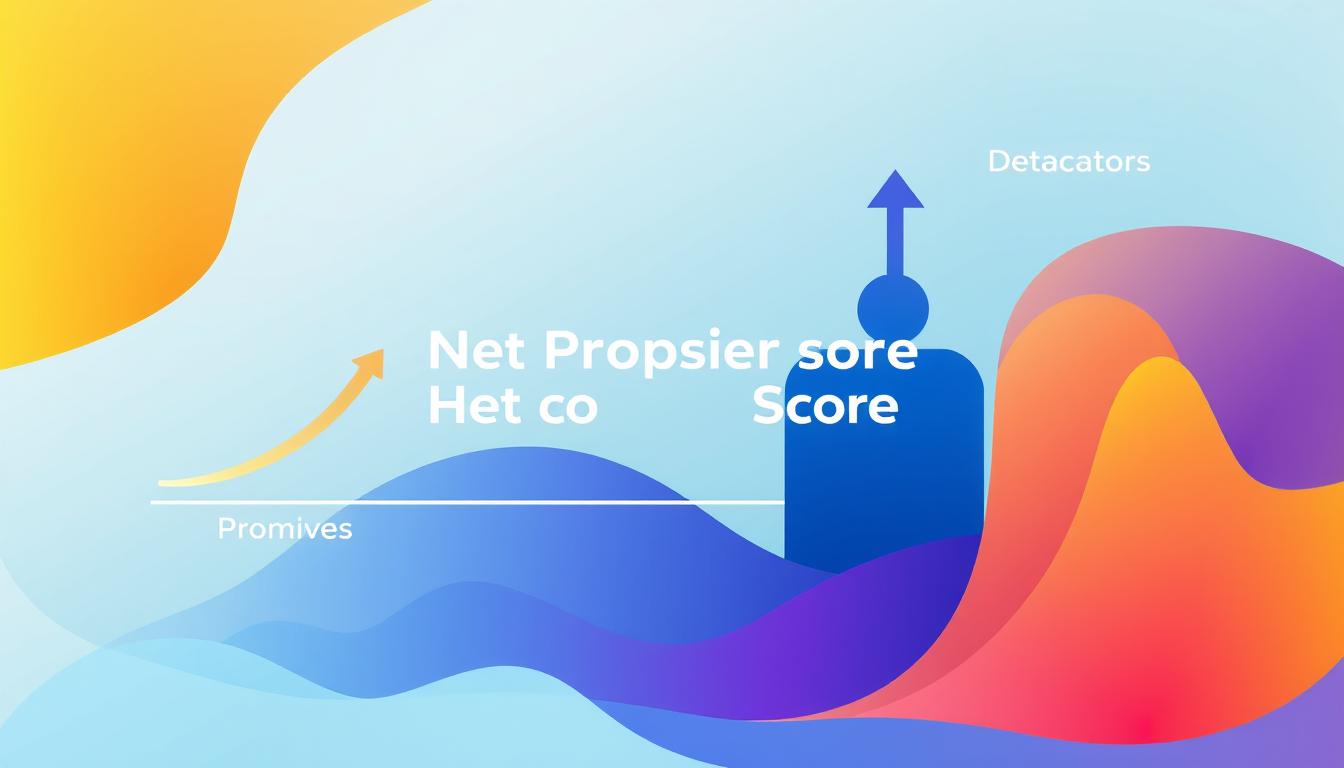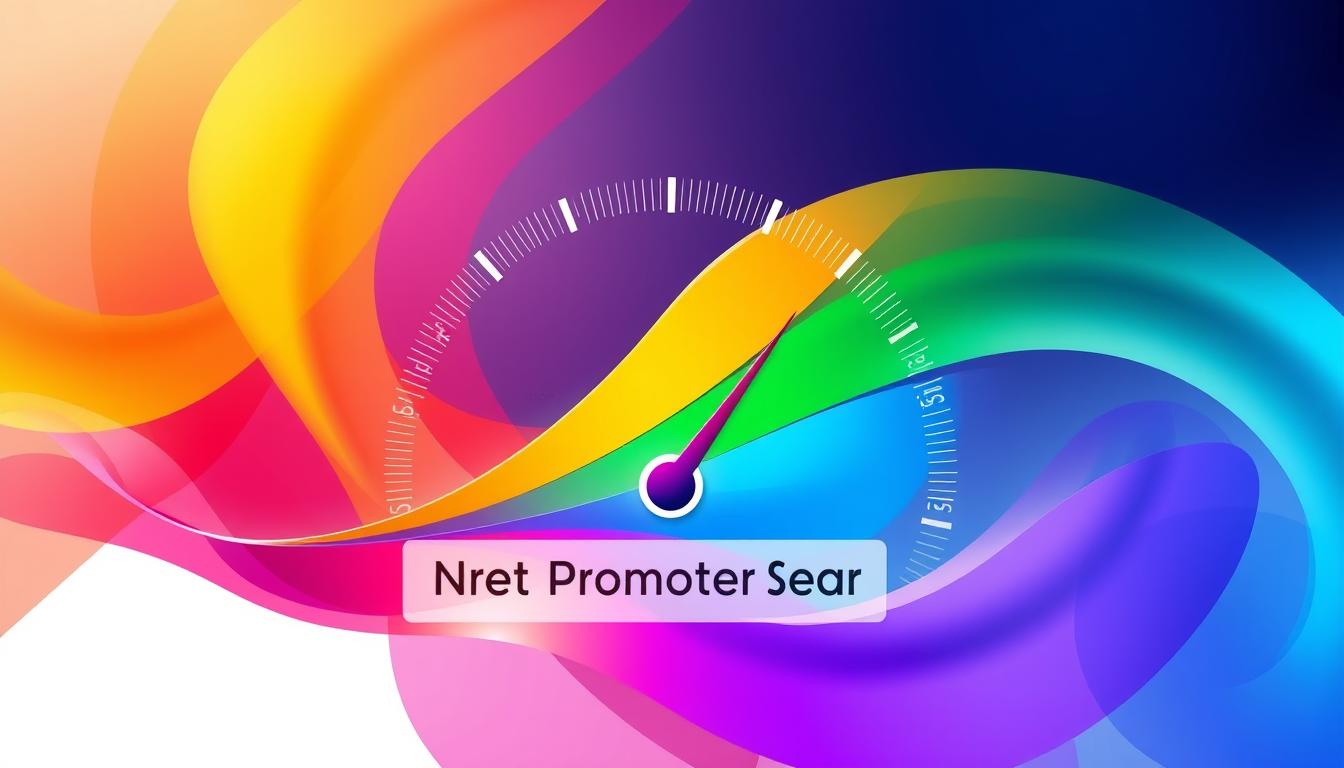As we navigate the ever-evolving landscape of online retail, leveraging customer feedback is more crucial than ever. The Net Promoter Score (NPS) provides us with valuable insights into our customers’ loyalty and satisfaction, making it an essential tool for enhancing the eCommerce experience. By effectively integrating NPS into our strategies, we can create personalized shopping experiences that cater to our customers’ unique needs and expectations. Current trends indicate that companies proficient in utilizing NPS outpace their competitors significantly. In this article, we will explore the importance of customer feedback and the transformative power of NPS in shaping our approach to eCommerce.
Key Takeaways
- Understanding how NPS can enhance customer loyalty.
- The significance of incorporating customer feedback in eCommerce strategies.
- Utilizing NPS to create tailored shopping experiences.
- Recognizing trends in eCommerce and customer satisfaction surveys.
- Implementing effective NPS strategies to outperform competitors.
Understanding the Importance of Customer Feedback in eCommerce
In the evolving world of eCommerce, the significance of customer feedback cannot be overstated. As businesses, we thrive on understanding the perceptions and experiences of our customers. Utilizing customer satisfaction surveys plays a crucial role in this process, allowing us to capture valuable insights that refine our offerings. Without feedback, our strategies would lack the necessary direction to enhance the customer experience in retail.
By implementing a well-designed customer feedback form, we can gather essential opinions that inform our business practices. This feedback not only highlights areas of improvement but also celebrates what we are doing well. Moreover, the insights derived from customer insights help us adapt and innovate in a competitive market.
Examining the impact of customer feedback on our business performance reveals clear advantages. Increased customer satisfaction often leads to higher retention rates, which allows us to engage with loyal customers repeatedly. Thus, prioritizing customer feedback becomes vital in shaping the future of our business.
| Feedback Method | Benefits | Impact on Customer Experience |
|---|---|---|
| Customer Satisfaction Surveys | Identify pain points and areas for enhancement | Improved service and product offerings |
| Customer Feedback Form | Capture real-time feedback | Boosted customer engagement and loyalty |
What is Net Promoter Score?
The Net Promoter Score (NPS) serves as a pivotal measure of customer loyalty and satisfaction. This metric is designed to assess how likely customers are to recommend our brand to others, ultimately indicating their overall sentiment towards our offerings. By leveraging a net promoter score survey template, we can gather valuable insights, facilitating a clearer understanding of customer experiences.
Definition and Key Metrics
NPS is determined by asking customers a single question: “On a scale of 0 to 10, how likely are you to recommend our company to a friend or colleague?” Responses categorize customers into three distinct groups:
- Promoters (score 9-10): Highly satisfied customers who are likely to spread positive word-of-mouth.
- Passives (score 7-8): Satisfied but unenthusiastic customers who may switch to competitors.
- Detractors (score 0-6): Unhappy customers who can damage our brand through negative feedback.
The NPS score is calculated by subtracting the percentage of Detractors from the percentage of Promoters. The resulting score can range from -100 to 100, offering a clear picture of our customer loyalty.
How NPS Differentiates from Other Customer Satisfaction Surveys
Distinct from traditional customer satisfaction templates, NPS focuses specifically on customer loyalty rather than general satisfaction. Many surveys measure specific interactions or experiences, often leading to fragmented insights. NPS, in contrast, provides a holistic view of customer commitment to our brand. This specific focus enables us to strategically align our efforts in eCommerce with customer sentiments and loyalty.
By integrating feedback from our net promoter score survey template, we can precisely identify areas for improvement, creating targeted strategies to enhance customer experiences.
| Group | Score Range | Description |
|---|---|---|
| Promoters | 9-10 | Highly satisfied customers likely to recommend our brand. |
| Passives | 7-8 | Satisfied but unenthusiastic customers. |
| Detractors | 0-6 | Unhappy customers who may share negative feedback. |
Benefits of Utilizing NPS Feedback
Utilizing NPS feedback can unlock numerous advantages for our eCommerce platforms. By carefully analyzing the responses, we can gain valuable insights into our customers’ needs and preferences. This approach not only improves our marketing strategies but also plays a crucial role in enhancing customer loyalty and driving sales.
Enhancing Customer Loyalty
Through customer satisfaction surveys, we identify our most loyal customers and learn what keeps them engaged. Understanding these preferences allows us to personalize our offerings effectively. As we focus on enhancing customer loyalty, we create a strong bond that leads to repeated business and positive word-of-mouth referrals.
Driving Sales through Personalization
Personalization is an essential driver of sales in the competitive eCommerce landscape. By leveraging insights from NPS feedback, we tailor our marketing campaigns to appeal directly to different customer segments. This strategy not only boosts our sales figures but also fosters long-term relationships with our customers, establishing a loyal base that contributes to ongoing success.
| Benefit | Description |
|---|---|
| Improved Customer Insights | Understanding customer preferences through feedback. |
| Increased Engagement | Creating personalized experiences to captivate customers. |
| Higher Retention Rates | Fostering loyalty through tailored offerings. |
| Boosted Revenue | Driving sales through effective segmentation and targeting. |
Collecting NPS Feedback Effectively
Gathering NPS feedback is integral to enhancing our understanding of customer experience. By implementing a robust net promoter score survey template, we can ensure that our feedback collection is both effective and engaging. We will discuss best practices and provide guidance on timing and frequency, ensuring that we maximize response rates while respecting our customers’ time.
Best Practices for Implementing a Net Promoter Score Survey Template
When creating a net promoter score survey template, clear and concise question phrasing is essential. We want to ensure that our customers understand what we are asking, minimizing confusion and improving response rates. Key practices include:
- Keep questions straightforward to avoid misinterpretation.
- Limit the number of questions to respect customer time.
- Utilize a mix of quantitative and qualitative questions for richer data.
- Incorporate branding elements to enhance the survey’s appeal.
Timing and Frequency of Feedback Collection
Finding the right timing and frequency for collecting feedback is crucial for obtaining a representative sample of our customers’ opinions. We should consider the following:
- Conduct surveys after impactful interactions, such as post-purchase.
- Avoid overwhelming customers; choose specific intervals for feedback requests.
- Analyze past feedback trends to identify optimal times for surveying.
- Utilize customer satisfaction survey templates to complement NPS feedback.

Analyzing NPS Feedback for Insights
Analyzing NPS feedback is essential to refine our eCommerce strategies effectively. We turn raw data into insightful information that drives decision-making. Utilizing a product feedback survey template allows us to collect specific customer insights that inform necessary changes and improvements.
To enhance our understanding of customer satisfaction, we can implement several analytical methods:
- Data Visualization: Graphing NPS scores over time helps us spot trends and shifts in customer sentiment.
- Cross-Analysis: We can compare NPS data with existing customer satisfaction surveys to gain a more robust perspective.
- Segmentation: Grouping respondents by demographics, purchasing behavior, or NPS scores clarifies varying customer needs.
- Qualitative Analysis: Examining open-ended feedback reveals customer emotions and sentiments about specific experiences.
These insights empower us to identify improvement areas, align our strategies with customer expectations, and ultimately enhance the overall customer experience. The effective analysis of NPS feedback positions our business for growth and improved customer relations.
Using NPS Feedback to Tailor the Shopping Experience
Incorporating insights from NPS feedback allows us to fine-tune the shopping experience for our customers. By segmenting customers based on their NPS results, we can identify distinct groups with unique preferences and needs. This classification enables the development of targeted marketing campaigns that speak directly to the interests of various demographics.
Segmenting Customers Based on NPS Results
Understanding customer satisfaction through a questionnaire for retail store customers provides crucial insights. The results can inform how we categorize customers into different segments, based on their likelihood to recommend our brand. Some effective criteria for segmentation include:
- Promoters: Customers who scored highly on the NPS, indicating they are likely to recommend our store.
- Passives: Customers who offered neutral scores, suggesting room for improvement.
- Detractors: Customers with lower scores, signaling potential issues in their experience.
By analyzing the results and correlating them with retail customer survey questions, we gain a clearer picture of what each segment values. This knowledge enables us to craft more personalized experiences that meet the unique needs of each group.
Creating Targeted Marketing Campaigns
With our segmented customer insights, we can launch targeted marketing campaigns that resonate strongly with each group. Examples of strategies include:
- Exclusive promotions for promoters, reinforcing their loyalty and encouraging word-of-mouth referrals.
- Follow-up communications with passives, detailing improvements and inviting them to engage further with our brand.
- Addressing the concerns of detractors through tailored outreach that demonstrates our commitment to customer satisfaction.
The integration of these focused strategies helps foster deeper connections with our audience. By continuously gathering feedback through our NPS and retail customer survey questions, we can refine our campaigns to better align with customer desires.
Integrating NPS into Your eCommerce Platform
Integrating NPS into our eCommerce platform involves a systematic approach to gathering insights directly from our customers. This integration aims to enhance the customer experience in retail and foster long-term loyalty. By placing NPS surveys strategically during critical customer interactions, we can capture valuable feedback efficiently.
A great starting point is to embed NPS surveys in key areas such as:
- Checkout processes to gauge customer sentiments before completing a purchase.
- Customer account pages for continuous engagement and feedback collection.
- Post-purchase communications to understand satisfaction levels and areas for improvement.
Utilizing automated tools for feedback collection streamlines this process, ensuring that we can engage with our customers at the right moments. Consider these technical aspects to optimize our NPS integration:
- User-Friendliness: Our surveys should be intuitive, with uncomplicated formats that encourage participation.
- Data Security: Ensuring customer data protection during feedback submissions is crucial for maintaining trust.
- Real-Time Analytics: Incorporating tools for immediate analysis helps us act swiftly based on customer feedback.
By effectively integrating NPS, we can significantly enhance the customer experience in retail. This process not only allows for a deeper understanding of our clientele but also empowers us to make informed decisions that resonate with their needs and expectations.
| Integration Aspect | Description | Benefits |
|---|---|---|
| Checkout Processes | Embed surveys to collect feedback just before purchase completion. | Identifies last-minute customer concerns and enhances satisfaction. |
| Customer Account Pages | Provide ongoing survey opportunities in user profiles. | Encourages long-term relationship building through continuous feedback. |
| Post-Purchase Communications | Send surveys after order delivery via email or SMS. | Gathers insights on overall purchase experience and product satisfaction. |
Real-World Examples of eCommerce Brands Leveraging NPS
Many eCommerce brands have successfully adopted successful personalization strategies through the utilization of Net Promoter Score (NPS) feedback. For instance, consider Amazon, which harnesses NPS data to define and refine its customer experience. By analyzing the feedback, Amazon identifies customer sentiments and preferences, allowing them to recommend personalized products effectively. The impact of this approach is measurable, evidenced by increased customer loyalty and higher sales conversion rates.
Case Study: Successful Personalization Strategies
Another notable example comes from Zappos, a shoe and apparel retailer. Through continuous collection and analysis of NPS feedback, they have enhanced their customer service protocols and personalized their recommendations. The quantifiable results from these efforts demonstrate that utilizing NPS not only improves customer satisfaction but also fortifies Zappos’ brand loyalty among its audience. These results highlight how we, too, can implement similar effective strategies in our endeavors.
Lessons Learned and Key Takeaways
An essential lesson learned from these examples is that the journey does not end with collecting NPS feedback. Continuous adaptation and evolution are paramount in leveraging insights from NPS to stay attuned to changing consumer expectations and market dynamics. The success of Amazon and Zappos underscores the significance of employing a feedback loop that informs our decision-making processes. As we craft our own personalization strategies, let us remain committed to understanding and responding to what our clients communicate through NPS, ensuring that we build lasting relationships and drive sales effectively.
FAQ
What is a Net Promoter Score (NPS) and why is it important for our eCommerce business?
Net Promoter Score (NPS) is a metric that gauges customer loyalty and satisfaction by asking how likely customers are to recommend our business to others. It is important for our eCommerce business because it helps us identify loyal customers, understand their preferences, and tailor our offerings accordingly, ultimately enhancing the customer experience.
How can we utilize customer satisfaction surveys to improve our services?
We can utilize customer satisfaction surveys to gather valuable insights into customer experiences and expectations. By analyzing feedback from these surveys, we can identify areas needing improvement, enhance our customer service, and refine our product offerings, leading to increased customer satisfaction and retention.
What are some best practices for implementing a Net Promoter Score survey template?
Best practices for implementing a Net Promoter Score survey template include crafting clear and concise questions, keeping the survey short to maximize engagement, and ensuring timely distribution, such as after a purchase or interaction. This will help us achieve higher response rates and more reliable data.
How do we analyze NPS feedback for actionable insights?
We analyze NPS feedback by examining the scores received and categorizing respondents into promoters, passives, and detractors. This allows us to identify trends and areas for improvement. Utilizing data visualization tools can further enhance our ability to interpret the feedback and make informed decisions that align with customer expectations.
What role does customer feedback play in enhancing our retail experience?
Customer feedback plays a crucial role in enhancing our retail experience by providing insights that help us understand customer preferences and behaviors. Utilizing tools such as customer feedback forms and retail customer surveys allows us to gather insights that inform our strategies, ultimately leading to a better shopping experience for our customers.
Can you provide examples of successful personalization strategies using NPS?
Yes, there are numerous examples of brands that have successfully used NPS to create personalized experiences. For instance, a retail brand segmented its customers based on NPS results and tailored marketing campaigns to different demographics, leading to improved engagement and increased sales. Such strategies demonstrate how effective leveraging of NPS can transform the shopping experience.
How should we determine the timing and frequency of collecting NPS feedback?
The timing and frequency of collecting NPS feedback should be carefully planned to avoid overwhelming customers. Key moments for collecting feedback include after a purchase, a significant interaction, or a customer service experience. This ensures that we gather relevant data while remaining respectful of the customer’s time.
What are some effective retail customer survey questions to ask?
Effective retail customer survey questions should focus on areas such as overall satisfaction, likelihood to recommend, product quality, and customer service experience. Examples include “How satisfied are you with your purchase?” and “What can we do to improve your shopping experience?” This feedback helps us gain deeper insights into customer perceptions.





